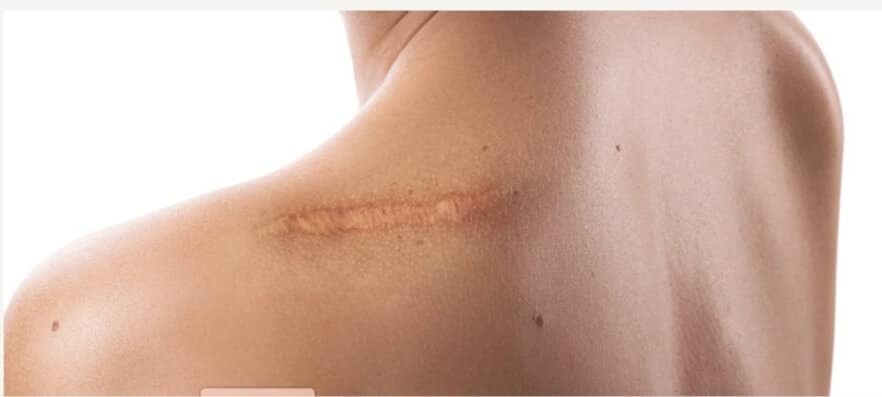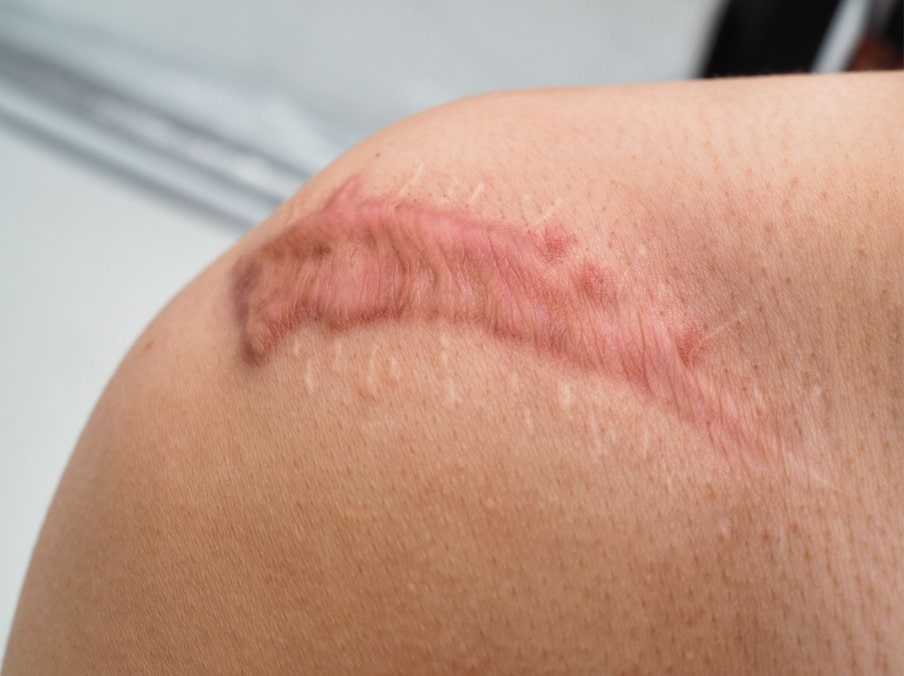How To Diminish Post Surgical Scars
Why do surgical wounds scar?
After surgery, the goal for the care of the surgical incision site is to allow for healing as rapidly as possible, to resemble the impacted tissue as much as possible and to produce the least amount of scar formation.

Scarring results from the body’s natural healing process after body tissue has been damaged. When tissue is injured, however small, the body increases the production of collagen to mend the site. Collagen is a natural component of the skin, but is synthesized during tissue repair. During the healing and the maturation of new tissue, the collagen first plays a role in the adhesiveness of tissues to hold it together, and eventually becomes more organized, thicker and denser. As a result, at least early in the process, the scar may look and even feel thicker than the normal skin.
What do surgical scars look like?
Scars that result from a surgical incision are usually narrow and paler than the surrounding skin, unless you have a tendency to make excess scar tissue. Ethnic background can be a component of scar formation. For example, people of African descent are more likely to form hypertrophic and keloid scars. These scars are an overgrowth of scar tissue at the site of an injury.

Scars typically take a shape that reflects the original injury to the skin. How a scar looks in the end depends on what caused it, how it was treated, the body’s ability to heal.
How can you diminish the appearance of a surgical scar?
Scars after surgery are unavoidable, but there are measures which may help to diminish their appearance. The management of a surgical incision does not end when the sutures are removed. Surgical scar care should be continued for at least one year. Note that post-surgical rehabilitation activity is important, but excessive tension on the surgical site may impact scarring. Adherence to the surgeon’s post-operative overall plan of care will provide the best overall outcome for recovery and minimization of scarring. Other recommendations related to best outcomes in surgical scar formation:
What are other recommendations to help reduce scar formation?
- Follow appropriate wound management as ordered with attention to appropriate cleaning and care. An antimicrobial skin and wound cleanser may be ordered by your provider for the surgical site, as well as a dressing if needed.
- Keep your hands away from the healing surgical site. Do not pick at the healing incision or otherwise traumatize the site during healing. You may note some itching at the site which is normal, but do not scratch the area and refer to your surgeon if needed.
- Consider a silicone-based product to cover the incision. Silicone has good scientific evidence related to scar treatment.
- Stay out of the sun and always use sun block. Immature scars that are exposed to the sun will stay red longer.
- Vitamin E and steroids have been shown to minimize scars
- Avoid excessive pulling and tension, which causes scars to widen and stretch. Avoid “overdoing it” and follow your rehabilitation plan as prescribed.
Treatments varying with the needs of the individual and their specific surgical site, as well as their risk of scar formation. Follow the surgeons’ recommendations for the best healing outcome.
To learn about a product indicated for the management of surgical wounds, please visit https://sanaramedtech.com/surgical/celleraterx-surgical/




